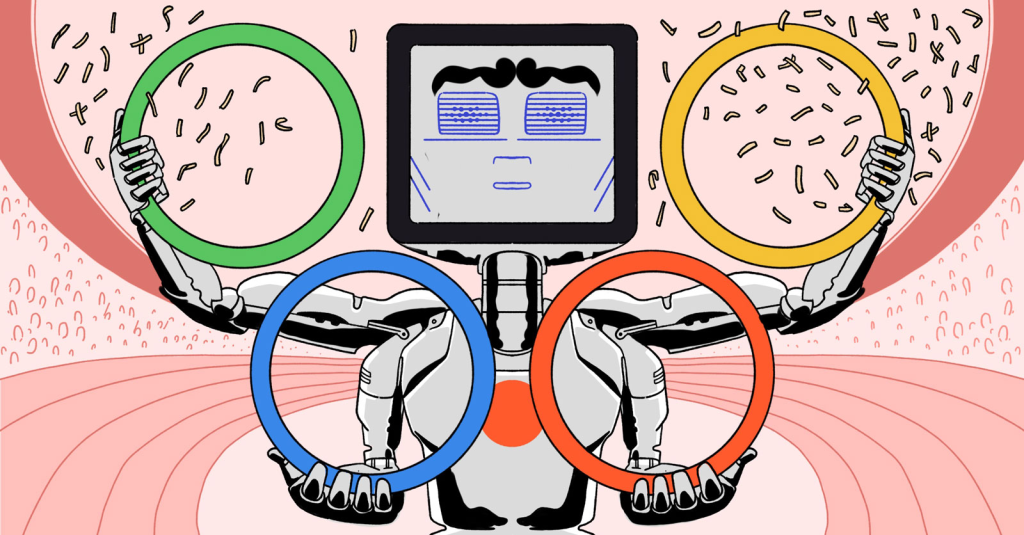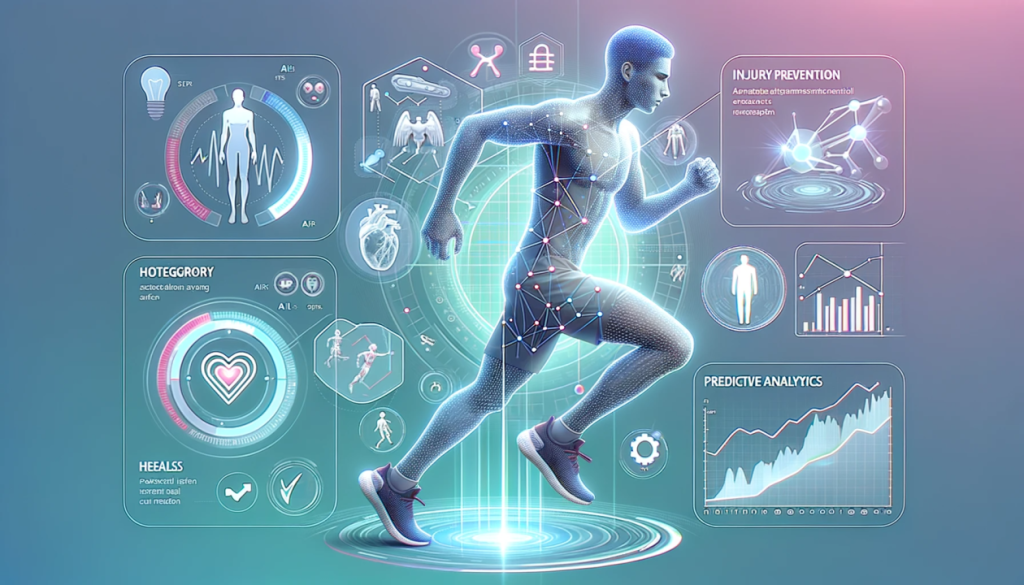Citius – Altius – Fortius, or Faster – Higher – Stronger. The Olympic motto symbolizes the essence of elite sports, the constant drive of humankind to push the boundaries of physical performance. With the expanding knowledge about the functioning of the human body, coaches and athletes adapted their training programs to strive for the best sport performances possible. In recent years, a new player has entered the field of optimizing performance: Artificial Intelligence. The blooming of AI technology has proved to hold incredible potential in multiple sectors to enhance efficiency and even perform tasks that would be near impossible for a human. This new age of technology introduces a wide variety of opportunities in elite sports and even though traditional coaches and athletes are often wary about new methods, these developments should be encouraged to once again push the boundaries of human performance.

One of the main ways to integrate AI into elite sports is by using algorithms to improve training programs and assist coaches (Sampredo, 2021). AI systems are able to use data, like heart rate variability, from wearables often worn by athletes and use models for optimal training load to design training sessions. Video footage along with AI technology can be used to classify strengths and weaknesses of athletes and provide feedback on how to improve. Take football for example, passing accuracy, positional data, number of high intensity sprints and successful dribbles and shots are all used to determine player quality and can better help coaches to gain insights in player contribution in matches. Real-time evaluations and predictive models even provide coaches with suggestions for tactics based on opposition player data and match observations.
Logically following from enhanced training programs is an improvement in injury prevention and screening (Sampedro, 2021). Currently AI is mainly being used in injury prevention to predict injury risk based on training load. However, it offers potential in more areas, namely concussion screening, ground reaction force pattern recognition and heart defect detection \cite{Claudino2019}. Ajax player Abdelhak Nouri, NFL player Daman Hamlin and son of NBA star LeBron James, Bronny James are all examples of athletes suffering sudden cardiac arrest as a result of undiagnosed heart defects. This paints a clear picture of how crucial it is to have appropriate screening technology in elite sports and AI can definitely aid in enhancing current technologies.

Lastly, not only can AI help to make elite sports safer but it can also make it more fair. AI can be used to aid judgment calls in sports like diving by analysing diving form and execution, reducing bias from judges. In sports with referees there are often claims from the players and the fans that referee decisions are biased, unfair or just blatantly wrong. The PGMOL, the governing body for match officials in the English Premier League, has issued 13 official statements apologizing for incorrect decision during matches in the last year. These decisions could have dramatically altered the outcome of these matches had they been right. While AI is not yet advanced enough to recognize intent or severity of fouls, future developments may hold the key in increasing accuracy of referee decisions. Another way AI can ensure a fair sporting environment is by the potential in it’s use in drug testing. The current practices in doping testing are expensive and require domain expertise and time. Machine learning algorithms have produced promising results in testing for EPO enhancers, which are used to increase endurance (Rahman, 2022). However, more research is needed to support it’s use for other doping sorts. This leads to one of the main arguments against integrating AI into elite sports, training these models requires sensitive private data from athletes which are usually highly confidential.
As collecting data can be beneficial, it also has some drawbacks. One of which is that the extent that the data is collected in can be a concern. Wearables have gained significant traction in recent times alongside other monitoring technologies which all continuously monitor and collect data without explicit or full understanding of the athlete regarding how this information will be used and who has access to it. Also the security of collected data can be an issue. The potential of a data breach or unauthorized access to personal information is problematic. Athletes’ information on health and performance is highly sensitive and if not properly managed can significantly impact future prospects, personal life and market value of these athletes. This misuse of data can also arise by the organization itself that collects this data. Sporting organizations themselves can already get their hands on more data of their athletes than necessary and use this in contract negotiations for example.
These are all serious issues but nonetheless issues with solutions. First and foremost, the organizations are obligated to comply to their respective local data protection regulations like the General Data Protection Regulation (GDPR) in Europe which are regulations assumed to develop alongside new technology developments. Secondly athletes should be given clear and informed insight about what data is collected, how the data will be used and who specifically has access to this data. Organizations are expected to ensure transparency over their data practices. On top of that are state-of-the-art cyber security encryption systems available to be implemented to ensure the safeguarding of all collected data to avoid the leaking of sensitive information.
A different issue could be the bias present in datasets used by AI systems. AI systems learn from historical data. If this data in turn is biased or non-representative, the AI systems inherit these biases which potentially lead to outcomes that are unfair and inaccurate. In the context of sport this can become apparent in biased player selection, performance analysis or referee decisions. More specifically, if an AI system is trained on data that highlights past (and potentially outdated) preferences like favouring players from a specific region or background, these AI systems might perpetuate these biases and unfairly disadvantage players with a certain background. This might also happen in systems used in scouting potentially overlooking groups of talented players that are underrepresented in the data. The same goes for other societal biases where for example media coverage of male athletes and sports is more prevalent, which makes AI systems trained on this data undervalue female sports. Lastly this can occur in automated referee systems if the system is unknowingly trained on past referee decisions that most likely contain decisions that are wrong.
Awareness in the scientific community for the presence of bias in data has sharply risen, alongside the measures that can be taken to prevent this. The organizations that create these AI systems should ensure the use of data sets that are representative, diverse and inclusive which reduces bias. On top of this there should be regular check ups and updates on the system to further decrease bias and mitigate biases that develop over time. Also we do not argue for the total hands-off adoption of these AI systems in sports, but rather as a tool to be used to help humans, while humans keep the oversight and keep the final say. This will catch any unfair decisions made by the AI systems which can then be further analysed, diagnosed and potentially prevented in the future. These organizations should also handle with transparency regarding the creation of these systems and the data used, building trust from society and allowing for external checks which increases accountability.
Of course new technologies and methods come with new challenges and there are a lot of developments to be made before we’re able to fully integrate AI into elite sports. However, it offers amazing potential to once again push the boundaries of human performance and add to the olympic motto. Faster, Higher, Stronger, Safer, Fairer.
References
[1] Joao Gustavo Claudino. Current approaches to the use of artificial intelli-gence for injury risk assessment and performance prediction in team sports:
a systematic review. Sports medicine – Open, 2019.
[2] Maxx Richard Rahman. Ai-based approach for improving the detection of
blood doping in sports. Cornell University, 2022.
[3] Alberto Carrio Sampedro. The case of ai in sport: Some ethical concerns at
play. Academic Journal on Olympic Studies, 2021.
[4] Joel Sritharan. Var apology list in premier league: Updated list of pgmol
apologies for referee mistakes in english football. 2023.


